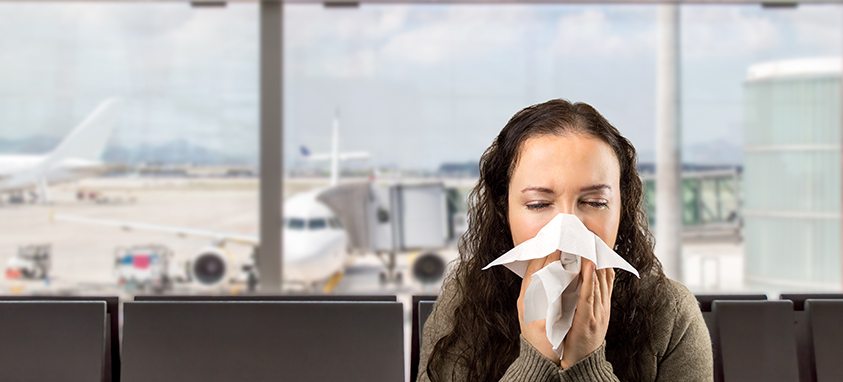Another reason to be thankful: You haven’t come down with the flu. Yet. Centers for Disease Control (CDC) fudges when asked how bad this year’s flu season will be. “It’s not possible to predict,” admits CDC’s website.
CDC strongly recommends getting a flu shot, but we all know that doesn’t always guarantee absolute flu protection. When the vaccine was formulated months ago, its manufacturers took an educated guess as to what permutations of flu virus will be taking us down this season.
Catching the flu, of course, is all about exposure to the virus. At work and home, we have limited but significant means to defend ourselves. Practicing good hygiene (regular hand washing). Avoiding touching your face after shaking hands. Working remotely when possible. Co-workers letting everyone know when they aren’t feeling well. And, last but by no means least, boosting immunity through smart nutrition.
Dr. Joel Fuhrman, author of Super Immunity, advises healthy portions of the GBOMBS—greens, beans, onions, mushrooms, berries and seeds.
Now, let’s throw an all-bets-are-off variable into the equation. As a meetings professional, you fly. Sometimes often. A Canadian study published in 2004 found passengers were 113 times more likely to have caught a cold during a five-hour flight between San Francisco and Denver than during normal daily life.
But there are strategies for ducking flu and cold viruses when you fly. For those that follow, we are indebted to health journalist Melanie Haiken.
-
Drink lots of water, before and during the flight.
Low humidity in an airplane cabin is a chief cause of our likelihood of getting sick, because the mucus membranes in our noses and throats—our primary defenders against letting viruses and germs into our systems—don’t work as well.
-
Don’t touch the seat pocket in front of you.
According to the National Institute of Allergy and Infectious Disease, rhinoviruses—which give us the common cold—can live up to three hours on any surface, whether that’s the seat pocket, tray table or armrest. If you must touch, slide your sleeves over your hands first, or use a tissue.
-
Use disinfecting wipes.
Wipe down all those icky surfaces in front of and next to you.
-
Open the air vents.
Sounds wrong, doesn’t it? But research says actively recirculating air (which is filtered) can help push floating nasties away.
-
Close the toilet lid before flushing.
A 2005 study found that large numbers of microorganisms persisted in the toilet bowl surface and in the bowl water, which were disseminated into the air by further flushes. Enough said.
-
Use your seat as a barrier.
If you have a hacker or sneezer behind you, keeping your seat upright can help shield you.
-
Protest if you’re stuck on the runway with the ventilation system off.
In one research study, 72 percent of passengers became ill with flu within two days after being held on the plane with no ventilation for three hours because of an engine problem. All it took was one sick passenger. Current regulations require passengers to be removed from the aircraft within 30 minutes of shutting off the ventilation system. If your pilot ignores this rule, talk to a flight attendant. If that doesn’t work, try to get other passengers to complain. In past cases, that has worked.





